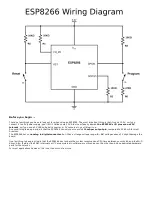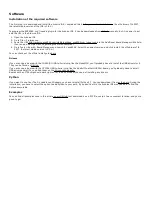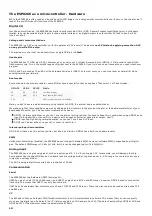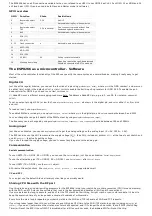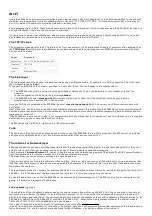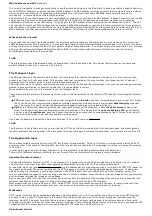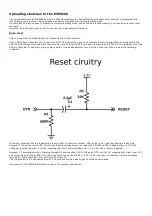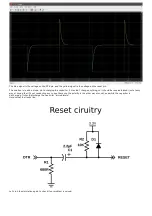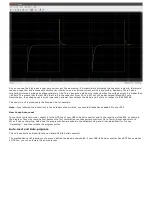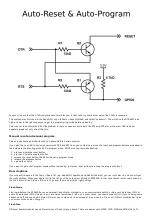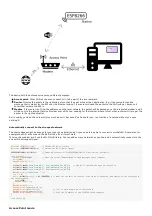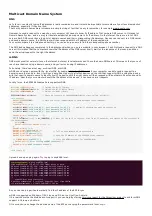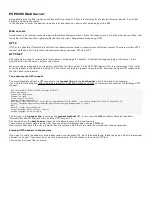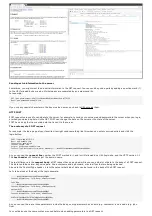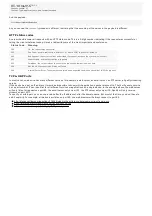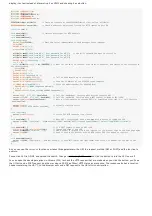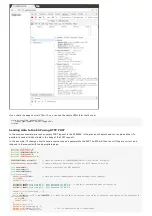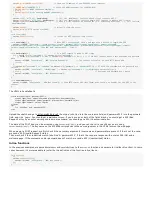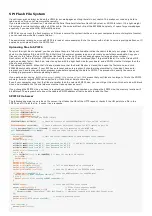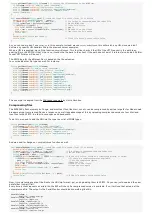
Establishing a Wi-Fi connection
Like I mentioned in the previous chapter, the ESP8266 can operate in three different modes: Wi-Fi station, Wi-Fi access point, and both
at the same time. We'll start by looking at the configuration of a Wi-Fi station.
Station mode
Connecting to one specific network
#include
<
ESP8266WiFi
.
h
>
// Include the Wi-Fi library
const
char
*
ssid
=
"SSID"
;
// The SSID (name) of the Wi-Fi network you want to connect to
const
char
*
password
=
"PASSWORD"
;
// The password of the Wi-Fi network
void
setup
() {
Serial
.
begin
(115200);
// Start the Serial communication to send messages to the computer
delay
(10);
Serial
.
println
(
'\n'
);
WiFi
.
begin
(ssid
,
password);
// Connect to the network
Serial
.
(
"Connecting to "
);
Serial
.
(ssid);
Serial
.
println
(
" ..."
);
int
i
=
0;
while
(
WiFi
.
status
()
!=
WL_CONNECTED) {
// Wait for the Wi-Fi to connect
delay
(1000);
Serial
.
(
++
i);
Serial
.
(
' '
);
}
Serial
.
println
(
'\n'
);
Serial
.
println
(
"Connection established!"
);
Serial
.
(
"IP address:\t"
);
Serial
.
println
(
WiFi
.
localIP
());
// Send the IP address of the ESP8266 to the computer
}
void
loop
() { }
The code to connect to a wireless access point is relatively straightforward: enter the SSID and the password of the network you want
to connect to, and call the
WiFi.begin
function. Then wait for the connection to complete, et voilà, your ESP8266 is now connected to
your Local Area Network.
Don't believe me? I'll prove it to you: open the Serial monitor (CTRL+SHIFT+M) and upload the sketch. You should see something like
this:
Connecting to SSID ...
1 2 3 4 5 6 ...
Connection established!
IP address: 192.168.1.3
Now go to your computer and open up a terminal: On Windows, search for "Command Prompt", on Mac or Linux, search for "Terminal".
You could also use the shortcuts: on Windows, hit + R, type "cmd" and hit enter, on Linux, use
CTRL+ALT+T
.
Next, type
ping
, and then the IP address you received in the Serial monitor. If you're on Mac or Linux, use
CTRL+C
to stop it after a
couple of lines. The output should look something like this:
user@computername
:
~
$ ping 192.168.1.3
PING 192.168.1.3 (192.168.1.3) 56(84) bytes of data.
64 bytes from 192.168.1.3: icmp_seq=1 ttl=128 time=6.38 ms
64 bytes from 192.168.1.3: icmp_seq=2 ttl=128 time=45.2 ms
64 bytes from 192.168.1.3: icmp_seq=3 ttl=128 time=69.1 ms
64 bytes from 192.168.1.3: icmp_seq=4 ttl=128 time=94.0 ms
64 bytes from 192.168.1.3: icmp_seq=5 ttl=128 time=20.5 ms
64 bytes from 192.168.1.3: icmp_seq=6 ttl=128 time=7.37 ms
^C
--- 192.168.1.3 ping statistics ---
6 packets transmitted, 6 received, 0% packet loss, time 5003ms
rtt min/avg/max/mdev = 6.384/40.463/94.047/32.588 ms
The ping command sends small packets to the IP address of the ESP8266. When the ESP receives such a packet, it sends it back to the
sender. Ping is part of the second layer of the TCP/IP stack, the Internet layer. It relies on both the Data Link layer (Wi-Fi) and the
Internet Protocol*.
You can see that in the example above, we sent 6 packets to the ESP, and we also received 6 response (echo) packets. This tells us
that the Data Link, the Wi-Fi connection, and the Internet Protocol are working correctly.
We now know that the ESP can successfully communicate with other devices on the network, and if your local network is online (if it is
connected to the Internet via your modem), the ESP can also communicate with any device on the web !
Ping is a great tool to check if the ESP (or any device, really) is still connected to the network, and if it's still working fine.
One drawback is that IP addresses can change over time, but that's a problem we'll address in one of the following chapters ...
(*) I'm simplifying things a bit here. Actually, ping is part of the Internet Control Message Protocol (ICMP), that's also part of the second layer, just like the Internet
Protocol. Don't worry too much about it, just remember that if you can send ping packets to a device, you can also send IP packets.
Содержание ESP8266 SDK
Страница 4: ......
Страница 22: ......
Страница 32: ...It automatically detected that it had to send the compressed versions of index html and favicon ico ...
Страница 50: ......


